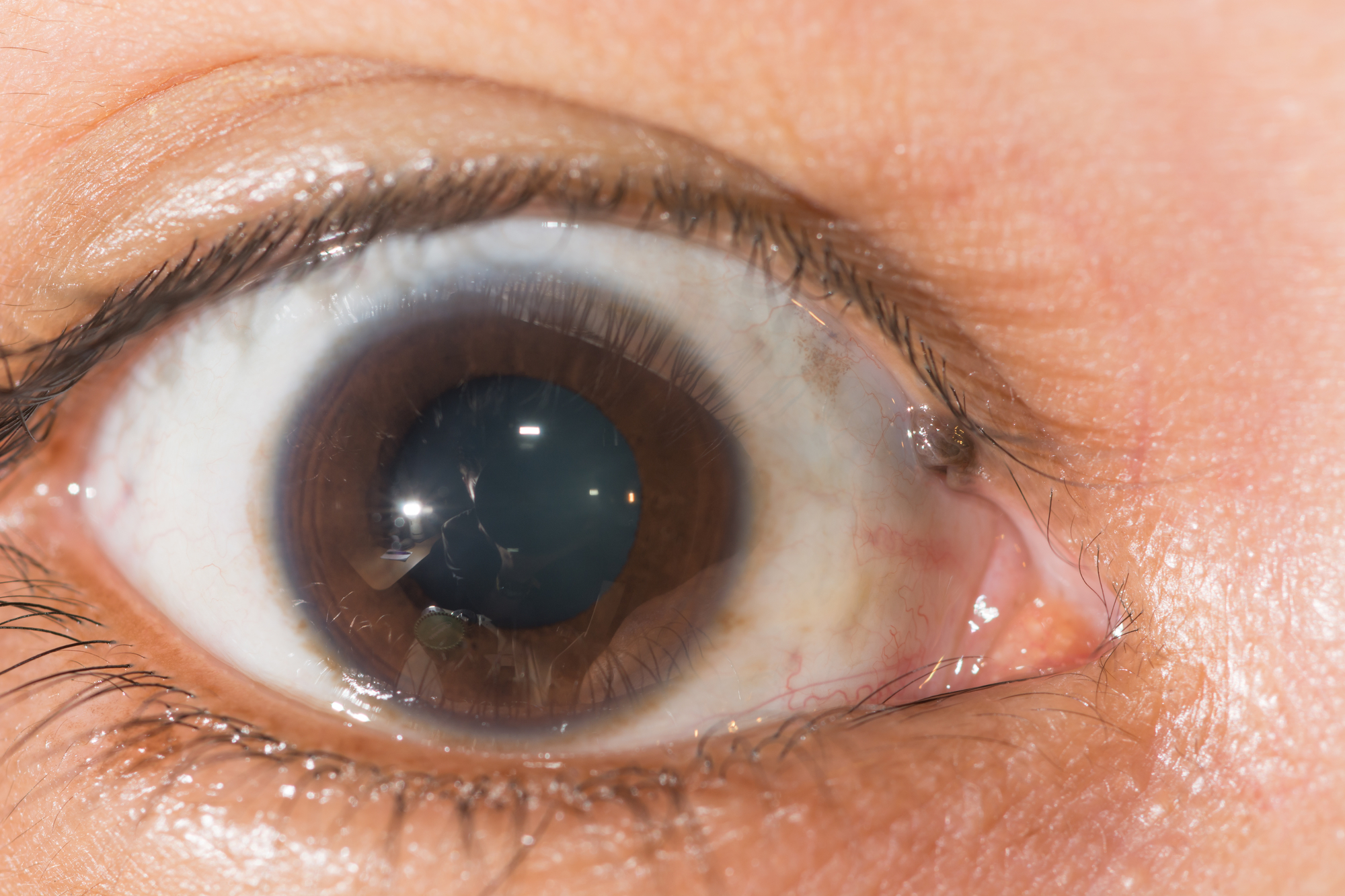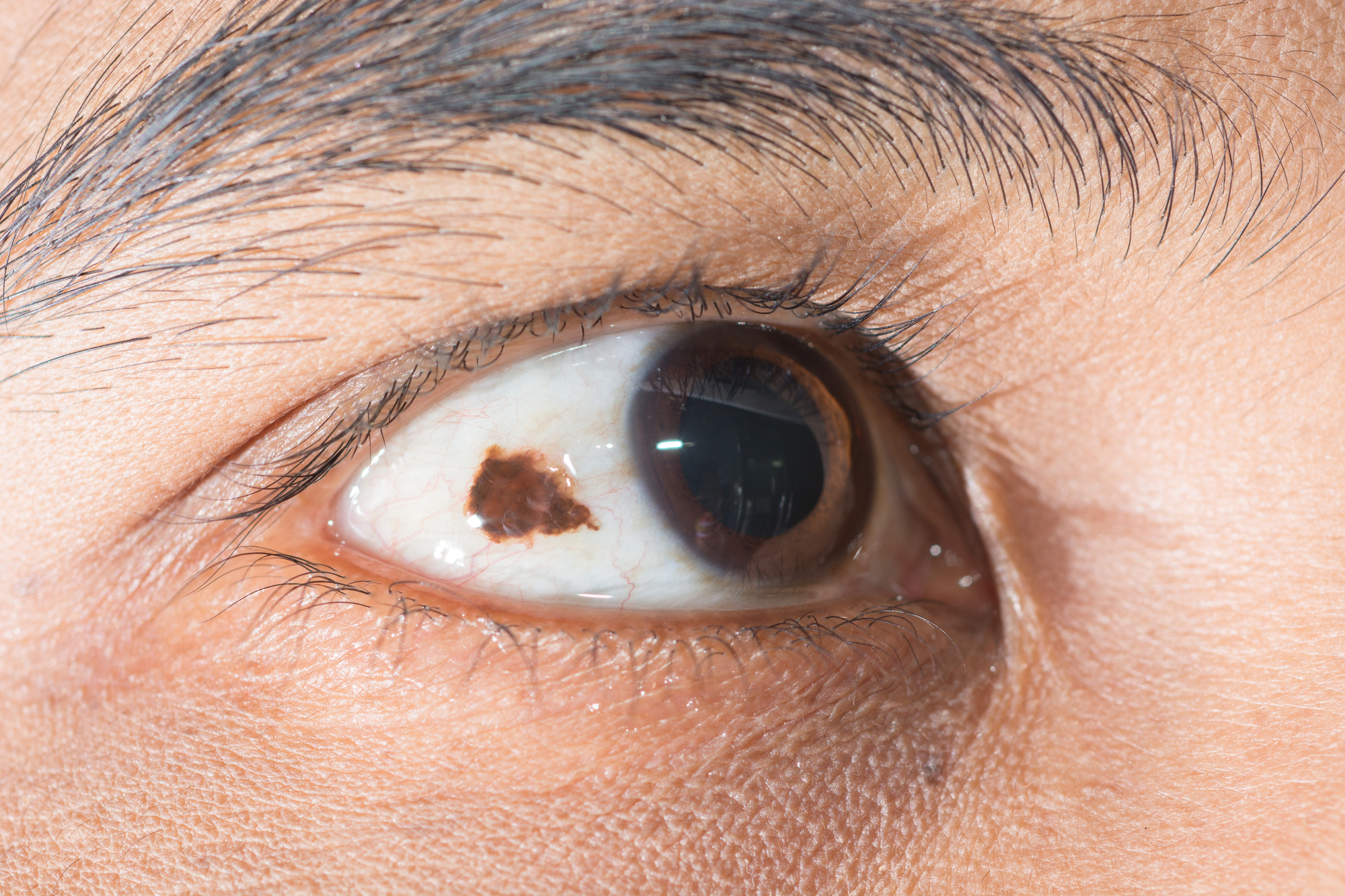Updated on October 4, 2024
What are the Different Types of Eye Freckles?


Vision Center is funded by our readers. We may earn commissions if you purchase something via one of our links.
What are Eye Freckles?
Eye freckle is the non-medical term for a nevus (nevi in its plural form), a benign (non-cancerous) and flat pigmented lesion that develops on the eye. It looks similar to a freckle mole or birthmark.
Nevi are melanocytes (cells that produce the pigment melanin) that clump together to form a brown lesion. Eye freckles can develop on the front of the eye, around the iris (colored part of the eye), or on the back of the eye.
Eye freckles in the back of the eye are more common in the Caucasian population, with an estimated 7.9% developing a nevus. The prevalence of choroidal nevi in the African American population is 0.6%.2


While most nevi are harmless and asymptomatic, in rare instances, they can transform into melanoma (cancer). For this reason, they are typically monitored by an ophthalmologist (eye doctor).
Should You Be Worried About an Eye Freckle?
Most eye freckles are harmless and asymptomatic.
However, eye freckles can sometimes turn into melanoma. One out of one thousand choroidal nevi develops into choroidal melanoma, which can be life-threatening.6
Regular, comprehensive eye exams can catch eye freckles early. They also provide the eye doctor with baseline measurements to monitor for signs of cancer over time.
Concerning Symptoms
An eye doctor will monitor eye freckles for signs of change or growth, which could indicate melanoma.
Concerning symptoms to look out for include:
- Nevus increases in size
- Changes in vision, including flashing lights and blurred vision
- Eye pain
- Nevus changes color
When to See a Doctor
If you develop an eye freckle, you should get a comprehensive eye exam to screen for signs of eye disease and routinely monitor any changes. Notable changes include:
- A thickness greater than 2mm
- Fluid leakage
- Orange color
- Secondary glaucoma (increase in eye pressure)
The doctor will document the size, shape, and color at each visit. Benign eye freckles don’t require any treatment.
See a doctor if you experience vision changes, eye pain, or the eye freckle is getting bigger or changing color.
Treatment for choroidal melanoma includes surgery and radiation therapy to remove the cancerous tissue.
Types of Eye Freckles
Eye freckles develop in various parts of the eye. Different types of eye freckles include:
Choroidal Nevus
A choroidal nevus is an eye freckle that develops on the choroid (layer of tissue under the retina in the back of the eye). Choroidal nevi can only be seen during an eye exam.
An eye doctor will monitor a choroidal nevus for signs of thickness and orange color, which may indicate it is choroidal melanoma (cancer), which can be life-threatening.
Rarely, a choroidal nevus may leak fluid or cause abnormal blood vessel growth. These symptoms can lead to retinal detachment, flashing lights, and vision loss.
Iris Nevus
Iris nevus is a visible freckle that appears on the colored part of the eye and is usually benign and asymptomatic. About 6 out of 10 people develop iris nevi.4
Iris freckles have been linked to excessive sun exposure and may grow larger over time.4
Conjunctival Nevus
Conjunctival nevi are benign eye freckles on the conjunctiva (clear film covering the eyeball). They typically darken over time.
Conjunctival freckles are the most common type of nevi and usually appear in childhood.5
What Causes Freckles Around the Eyes?
Eye nevi result from melanocyte cells clumping together to form a lesion, similar to a freckle or mole on your skin. Some people are born with eye freckles, and they are typically harmless.
Eye freckles can also develop later in life, usually from increased exposure to ultraviolet light (UV). These nevi are at a higher risk for developing melanoma and should be regularly monitored by an eye doctor.
Outlook
Visible eye freckles (nevi) are common in the Caucasian population and can develop in the back of the eye (choroid), the surface of the eye (conjunctiva), or the colored part of the eye (iris).
Eye freckles are typically harmless, painless, and do not affect vision. However, nevi can develop into melanoma (cancer), so an eye doctor will look for size, shape, and color changes.
In this article
8 sources cited
Updated on October 4, 2024
Updated on October 4, 2024
About Our Contributors
Amy, a registered nurse with an M.S. in Nursing from California State University, Sacramento, and a B.A. in Journalism from California State University, Chico, is a freelance health writer for Vision Center. Her unique combination of nursing knowledge and journalism skills enables her to educate readers about eye health effectively. Amy's goal is to merge her nursing experience with her writing talent to raise awareness about common eye conditions and ways to prevent vision loss.
Dr. Melody Huang is an optometrist and freelance health writer with a passion for educating people about eye health. With her unique blend of clinical expertise and writing skills, Dr. Huang seeks to guide individuals towards healthier and happier lives. Her interests extend to Eastern medicine and integrative healthcare approaches. Outside of work, she enjoys exploring new skincare products, experimenting with food recipes, and spending time with her adopted cats.

